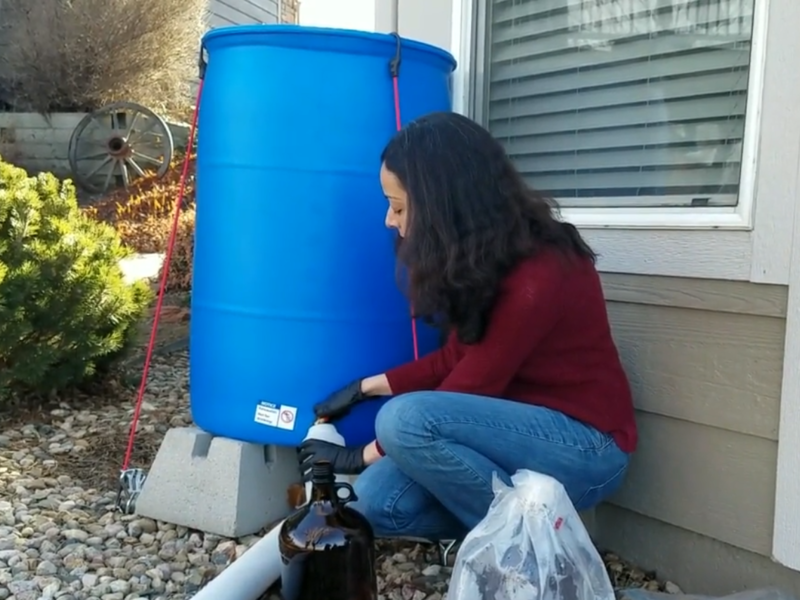Roof Runoff Microbial Analysis

Project Overview
Given the recent, tragic events such as the lead poisoning of Flint residents or Cape Town running out of water many homeowners have begun using rain barrels to collect rainwater falling on their property. This harvested rainwater, also known as “roof runoff”, is commonly used for irrigation of lawns, landscaping, garden beds or indoor plants, decreasing the demand from local drinking water supplies.
However, little is known about the microbial quality of the water or potential pathogens captured in roof runoff. Our team has undertaken a new citizen science project to understand more about harvested rainwater. Off the Roof is a citizen science initiative developed to provide data to researchers to better understand what pathogens may reside in roof runoff collected in rain barrels.
Technical Approach
The overarching goal of this initiative is to engage citizens in roof runoff sampling that will inform the public on use of alternative water sources while also collecting data on microbial water quality to better inform treatment targets for roof runoff for various end uses.
Participants in Off the Roof installed rain barrel collection systems on their residential downspouts to collect water from precipitation events at three different times of the year. Next, students in each study city collect the 10-gallon samples from each participant, which are then filtered and submitted for microbial examination to assess both chemical and microbial qualities to inform treatment standards and future guidance. Participants enter a variety of site characteristics and information into a CitSci organization dashboard.
Seven households in each of the following study regions were selected to participate in this project, for a total of 28 sampling sites:
- Baltimore, Maryland
- Fort Collins, Colorado
- Miami, Florida
- Tucson, Arizona
A broad array of household materials are represented in the participating locations including metal, asphalt shingles (most common), rolled roofs, slate/tile, and concrete roofing materials.
Analysis Parameters
- Biological Parameters
- Indicator Organisms: Total Coliform, E.coli, and Enterococci
- Pathogens (EPA Laboratory)
- Bacteria: Campylobacter and Salmonella
- Protozoa: Cryptosporidium and Giardia
- Chemical Parameters
- Turbidity, TOC, DOC, EC, TSS, TDS, VSS
Note: A peer-reviewed publication that describes the results of this study is forthcoming. This page will be updated once the manuscript has been published.
Project Team
- Dr. Sybil Sharvelle, Professor – Colorado State University Dept of Civil and Environmental Engineering
- Project Role: Principal Investigator
- sybil.sharvelle@colostate.edu
- Jumana Alja’fari, PhD Candidate – Colorado State University Dept. of Civil and Environmental Engineering
- Project Role: Lead field technician
- jumana.aljafari@colostate.edu
- Dr. Greg Newman, Research Scientist – Natural Resource Ecology Laboratory
- Project Role: Citizen Science Lead
- Dr. Tom Meixner, Professor – University of Arizona
- Arizona Investigator
- Dr. Claire Welty, Professor – University of Maryland, Baltimore County
- Maryland Investigator
- Dr. Mike Sukop, Professor – Florida International University
- Florida Investigator
COLLABORATORS
This project is funded by the National Science Foundation’s Urban Water Innovation Network (UWIN) with core participation from a variety of organizations and experts across the country including but not limited to:
- Cary Insitute of Ecosystem Studies
- US Environmental Protection Agency
- National Exposure Research Laboratory
- Rutgers University
- North Carolina State University
More information is available here: https://erams.com/UWIN/off-the-roof/